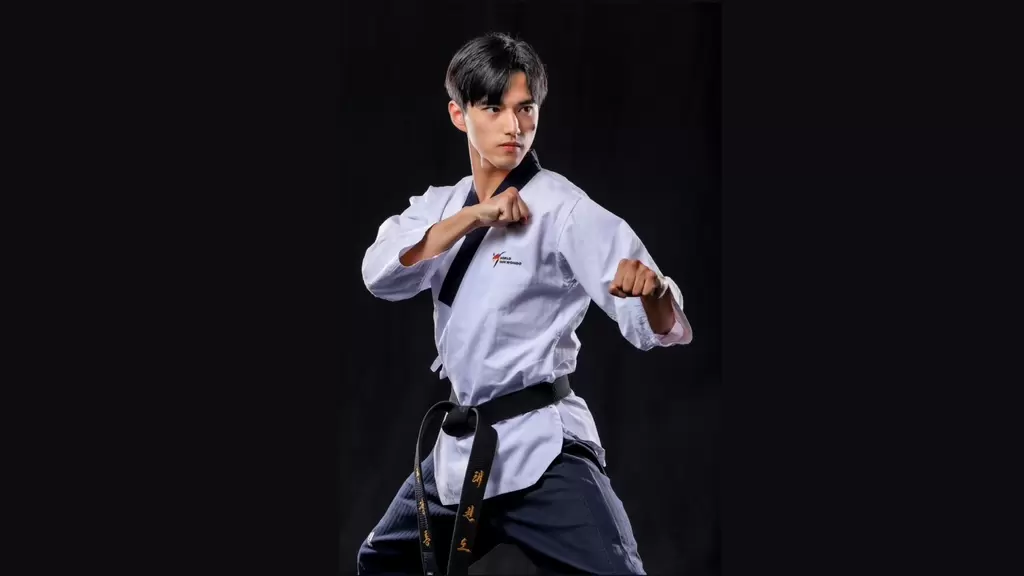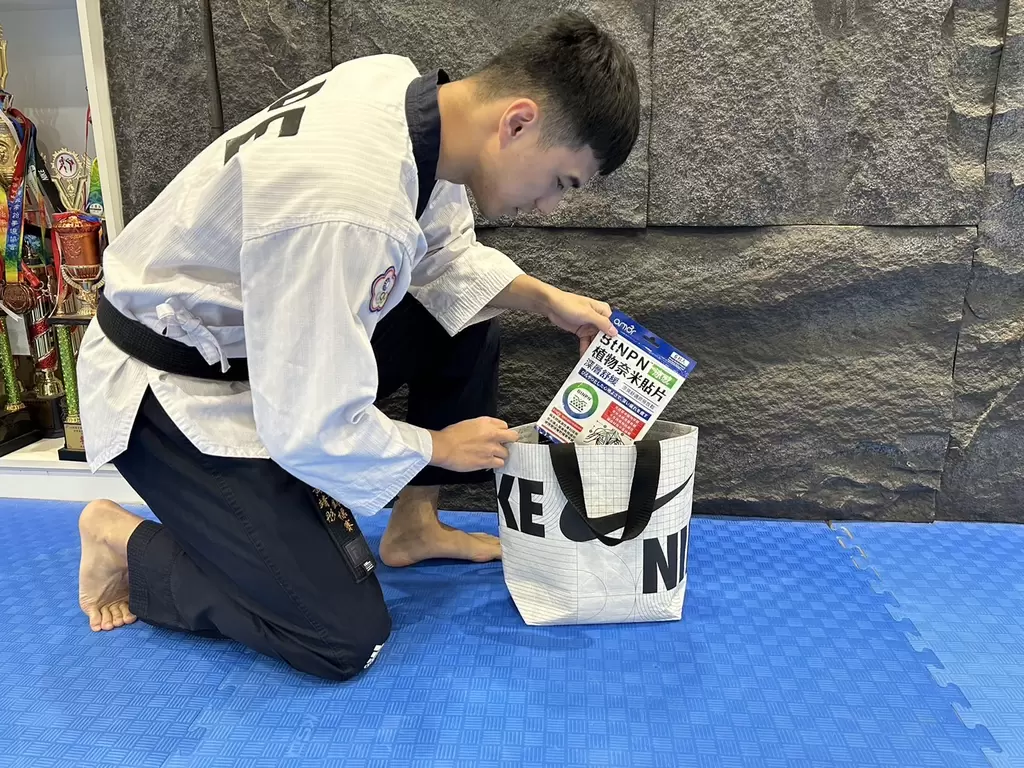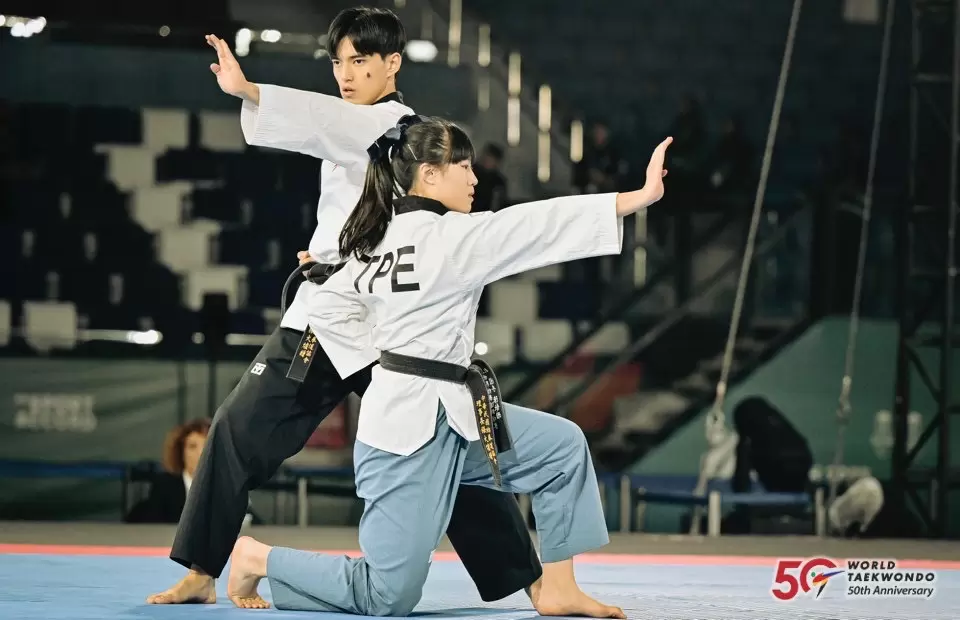BtNPN Plant-Based Nano Patch Recommendation: Taekwondo World Championship Gold Medalist Huang Jing-Tong – I Rarely Used Relief Patches Before, but This One Is Amazingly Effective

The Taekwondo Poomsae Star! World Championship Gold Medalist Huang Jing-Tong's Journey
Although *Poomsae* in Taekwondo may not receive as much attention as sparring, the outstanding performances of Taiwanese *Poomsae* athletes in international competitions have gradually brought this discipline into the public spotlight. At 25 years old, Universiade national team member and 2016 World Championship gold medalist Huang Jing-Tong stands out in this field. Let’s dive into his story.
The Beginning of His Taekwondo Journey
Standing at 175 cm, Huang Jing-Tong possesses both appearance and skill, making him a prominent figure in Taiwanese *Poomsae*. He has been selected as a national team member multiple times and has earned numerous medals for Taiwan. Most notably, he won a gold medal at the 2016 World Championships. During high school, he teamed up with Lin Li-Kai and Hsu Yu-Tse to win the gold medal in the 15-17-year-old men’s team category, bringing glory to the nation.
Reflecting on how he started practicing Taekwondo, Huang said: “When I was in second grade, I noticed a classmate attending the school Taekwondo club. Seeing her in a *dobok* (Taekwondo uniform) looked so cool, and it piqued my curiosity. I later realized Taekwondo could build physical strength and teach self-defense, which made me see it as not only a sport but also a practical skill. I then transitioned from the school club to a professional *dojang* to train more seriously.”
The Most Memorable Competition – 2022 World Championships ‘Flow State’
When asked about his most memorable competition, Huang Jing-Tong pointed to the 2022 World Championships *Poomsae* competition. He said: “In previous competitions, I would always feel nervous beforehand. But this time, I was completely immersed in my movements, the music, and the venue. Everything felt so clear, and it was as if the world had slowed down. Only I was moving. In psychology, this state is called ‘flow.’ That experience is still very vivid in my memory.”
Fatigue Relief Secret: BtNPN Plant-Based Nano Patch

Huang Jing-Tong’s Secret to Relieving Fatigue: BtNPN Plant-Based Nano Patch
Fatigue and soreness are common in Taekwondo training. Huang explained: “Taekwondo involves movements that engage the entire body, but the legs, especially the hamstrings, quadriceps, and glutes, tend to experience the most soreness. If flexibility is limited, the hamstrings are more prone to injury.”
After intense training, Huang typically stretches, massages his muscles, and uses alternating cold and warm baths for relief. During overseas competitions, relief patches are his go-to solution. Recently, he tried the BtNPN Plant-Based Nano Patch and was amazed by its results. Huang admitted: “I used to think relief patches were only mildly effective and just made the skin feel cool. But after using the BtNPN patch, I was genuinely surprised. I applied it to my right leg after weight training and left my left leg untreated as a comparison. The next morning, I realized my right leg was noticeably less sore. It was incredible!”
He added: “The BtNPN patch has a pleasant herbal scent, the cooling sensation is just right, and it doesn’t feel stuffy at all. Most importantly, it really works!” This experience changed his previous perception of relief patches as merely cooling without real results. He highly recommends bringing the BtNPN patch for overseas competitions and training camps as a convenient and effective recovery tool.
Huang Jing-Tong’s Recommendation: BtNPN Plant-Based Nano Patch
Internalizing Courtesy and Virtue: The Impact of Taekwondo

Image Source / Huang Jing-Tong Instagram
Talking about the impact of Taekwondo on his life, Huang highlighted the emphasis on courtesy, integrity, perseverance, and self-control. He said: “From a young age, I developed the habit of greeting elders with respect. People often say I’m very polite, but it’s just something I’ve internalized over the years.”
He also spoke about his coaching philosophy: “When teaching Taekwondo, I make sure to pass on the spirit of respect and discipline to my students. These values go beyond sports and influence how they interact with others in their daily lives.”
A Career Transition: Nurturing the Next Generation
At 25, Huang is entering a new phase in his career, transitioning from being an athlete to focusing on coaching young talents. He plans to open his own *dojang* this year. Huang shared: “Being a coach is very different from being an athlete. As a coach, I need to focus on each student’s physical and mental qualities, tailoring training methods to their individual strengths.”
He explained: “For students with exceptional flexibility, I encourage them to aim for higher kicks and emphasize elegance. For those with less flexibility, I focus on building their strength and explosiveness. Everyone has unique strengths, and the key is to train them accordingly.”
Despite focusing on coaching, Huang’s passion for Taekwondo remains strong. Once his *dojang* is stable, he plans to return to competitions and continue showcasing his skills on the international stage.
Learn more about Huang Jing-Tong’s journey: Huang Jing-Tong on Instagram